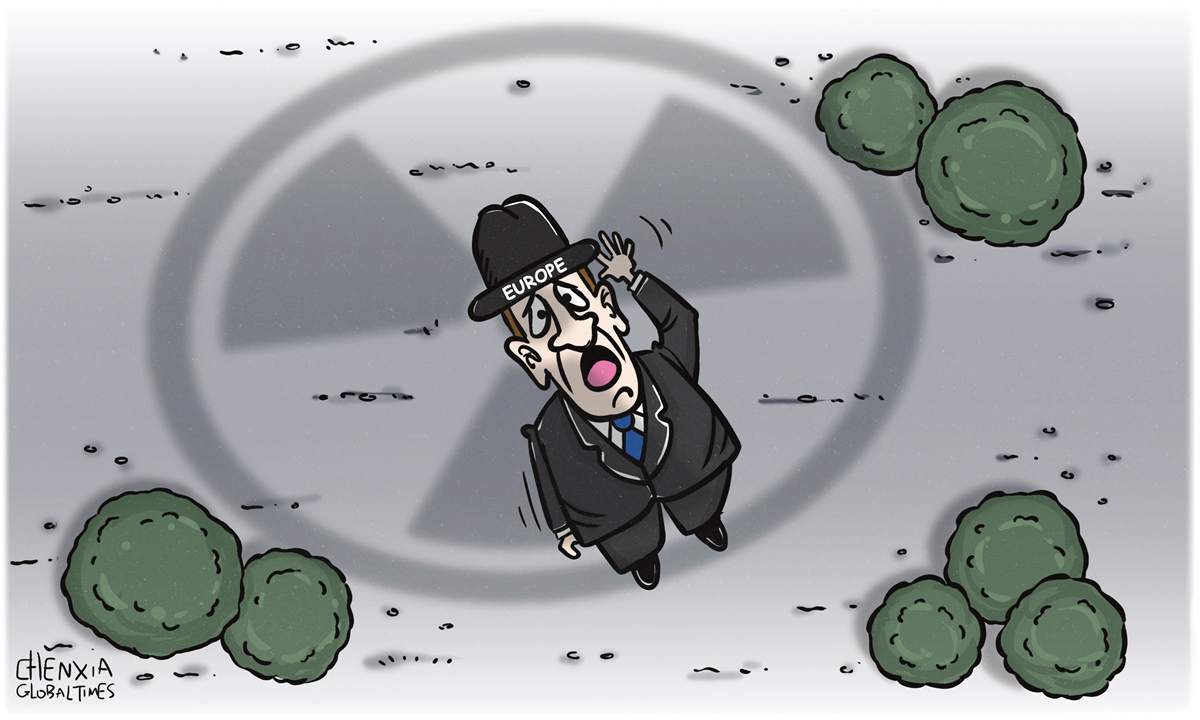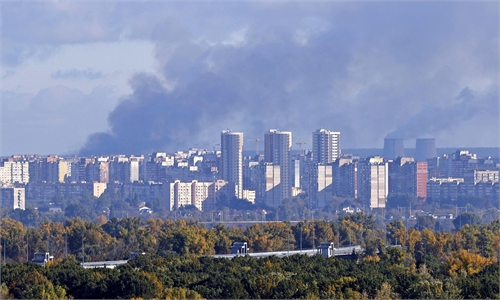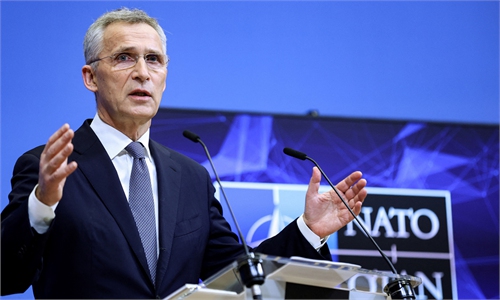Europe overshadowed by ghost of nukes again

Illustration: Chen Xia/GT
At a time when Europe is on the brink of a nuclear war crisis, it may make sense to look back at that white house on the beach in Reykjavik.On October 11-12, 1986, then US president Ronald Reagan and leader of the Soviet Union Mikhail Gorbachev held their talks in the Hofdi house to negotiate on nuclear weapons reductions.
I visited that house on a summer's day 27 years ago. It was next to the bay, with snow-capped peaks visible in the mist, and even in the summer the atmosphere around it was still chilly.
In the late 1970s, the Soviet Union deployed a new generation of SS20 intermediate-range missiles in Ukraine. In response, in the early 1980s, NATO decided to deploy additional medium-range missiles in Europe. According to Reagan's strategy, since they could not reach an arms control agreement, the deployment was bound to trigger an arms race that would bring down the Soviet Union. This was the consideration behind the launch of the US Strategic Defense Initiative, or "Star Wars program".
In 1985, the leaders of the US and the Soviet Union met for the first time in Geneva, Switzerland, and tried to find a solution for a possible reversal of the arms race. The following October, the two heads of state held a formal summit in Reykjavik, laying the groundwork for a future Intermediate-Range Nuclear Forces Treaty.
Gorbachev agreed to separate the issue of intermediate-range nuclear missiles from space weapons and accepted the "global double-zero option" (originally proposed by the US to withdraw all US and Soviet intermediate-range ballistic missiles from Europe).
In late 1987, the US and Soviet Union reached a treaty. The treaty stipulated that the two countries would no longer maintain, produce or test land-based cruise and ballistic missiles with ranges between 500 km and 5,500 km. This was the first time since mankind possessed nuclear weapons that a real reduction began.
Reykjavik thus went down in history.
The conclusion of the treaty, when the Soviet Union was at its weakest point in history, enhanced the West's sense of triumph and in turn enhanced the West's confidence in defeating Russia.
The strategic goal of the US and Europe has always been to either integrate Russia into the Western system as a compliant member or to squeeze Russia to the periphery of Europe, where it no longer poses any threat. Both of these options are "inevitably" unacceptable to Russia.
After the treaty was implemented, the EU (European Community) grew and NATO expanded. But the Soviet Union, and later Russia, failed to integrate into Europe and increasingly felt out of place.
The US has for years alleged that Russia violated the treaty and it withdrew from the treaty in 2019.
In fact, the US has left Russia far behind with its new weapons development. With NATO's continued eastward expansion, anti-missile systems have been deployed to Russia's borders.
The United States wanted absolute superiority and absolute security. Mark Twain said, "History never repeats itself, but it often rhymes." Is the "strategic balance" between empires destined to be a "zero-sum game"?
Some Russian elites now believe that "the period of trying to integrate into an international order created mainly by the West is over" (in the words of Sergei Karaganov, Putin's former diplomatic advisor).
Some analysts say that this was forced by the West; others say that it is about rebuilding a Russia-centric order. In fact, as in the United States, the sense of empire is rooted in Russian blood. The question is not whether Russia will be reborn, but in what way will it be? For the West, it remains a question of whether Russia can be "boxed in" to its order.
The nuclear weapons elimination "train" has changed tracks and is back on the old track. The possibility of a nuclear war has increased dramatically.
In Iceland's tourism advertisements, Hofdi House by the sea in Reykjavik has become a must-see attraction.
Some years ago, I don't know if it was to attract tourists, some Icelanders reported that strange noises were always heard from the white house at night. Later, the Icelandic Foreign Ministry issued an official statement saying they could neither confirm nor deny that there was a ghost there.
As the war between Russia and Ukraine continues to escalate, the demon of nuclear weapons seems to be still hovering around the white house in Reykjavik as the 1986 summit, making strange noises.
The author is a senior editor with People's Daily, and currently a senior fellow with the Chongyang Institute for Financial Studies at Renmin University of China. dinggang@globaltimes.com.cn. Follow him on Twitter @dinggangchina



